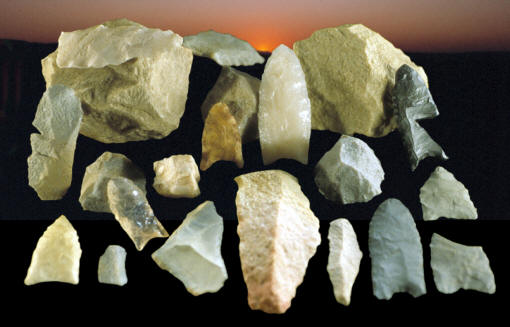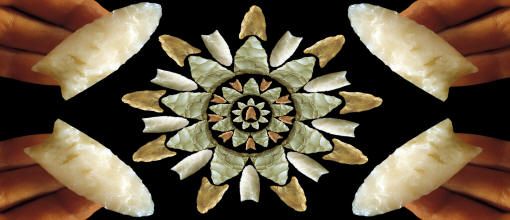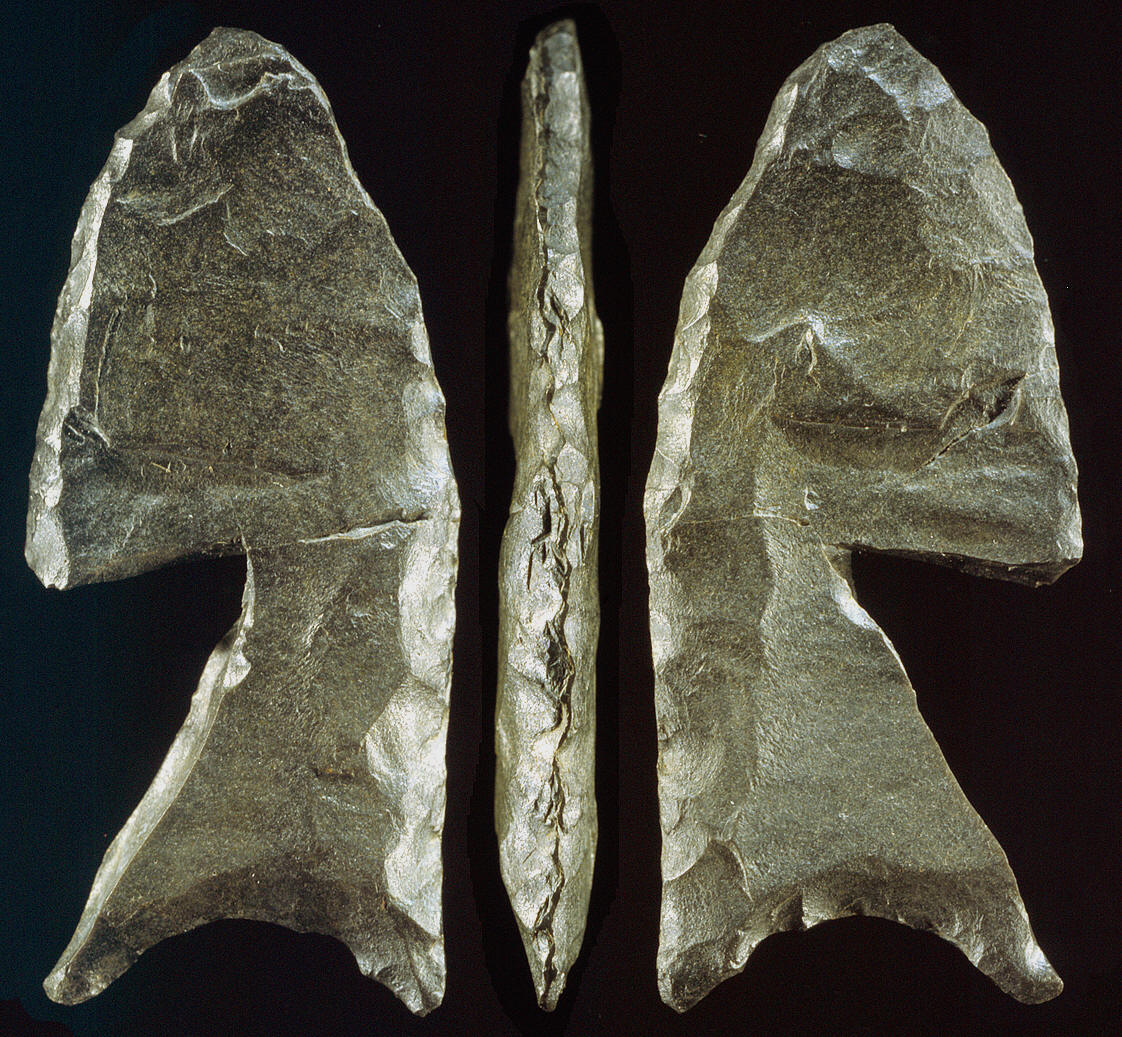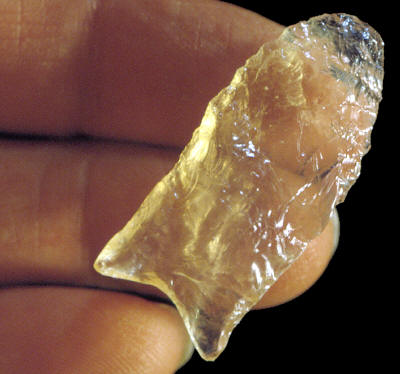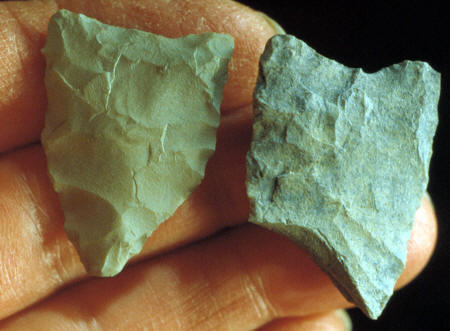|
||
|
||
|
"Once
the barn door was open (after the
discovery of the Monte Verde site),
potential pre-Clovis sites began appearing like freckles on a sunny day.
By far the most interesting of them is the one (the
Cactus Hill site) reported last month
in Philadelphia."---2000,
George Johnson, "Ancient Campfires Tell Us That The First American
Was A Virginian, St. Louis Post-Dispatch Newspaper" p. A15.
The Cactus Hill site excavation was a salvage project that began in 1993. The project was directed by John McAvoy and accomplished with the help of an all volunteer group. The Cactus Hill site was named after the prickly pear cactus that covers it. This is a culturally stratified archaeological site located on the Nottoway River in Sussex County, near the town of Stony Creek, in eastern Virginia. Evidence indicating a Clovis and pre-Clovis occupation of the site are the most important discoveries at Cactus Hill. |
||
|
The Cactus Hill site was excavated in three different areas, A, B and D. Area A was excavated by Michael Johnson and areas B and D by John McAvoy. The larger excavation was done in areas B and D where approximately a half million lithic artifacts and calcined bone fragments were recovered. The largest number of artifacts were identified as Early and Middle Archaic. The large number of artifacts were due to a quartzite cobble quarry activity on the site. Area B produced the majority of the artifacts and all of the Clovis and pre-Clovis artifacts. |
||
|
The Cactus Hill site is most famous for a Clovis and a pre-Clovis feature discovered in area B of the excavation. The Paleo-Indian artifacts are represented by cores, blades, end-scrapers, gravers, abraders, late stage preforms and projectile points. At least 35 artifacts are attributed to the Clovis feature. At least 15 artifacts are attributed to the pre-Clovis assemblage. |
||
|
||
|
The Clovis and pre-Clovis deposits were dated by two different techniques. By radiocarbon dating of wood charcoal and by optically stimulated luminescence dating (OSL) of single grains of sand. The Clovis level produced an uncalibrated radiocarbon date of 10,920 + 250 years BP (before present). The OSL dating process produced a calibrated date of between 12,700 to 13,200 calendar years. The pre-Clovis level produced an uncalibrated radiocarbon date of 15,070 + 70 years BP and an OSL calibrated date between 18,200 to 18,600 calendar years. When the dates are converted into calendar years they were determined to be "broadly in agreement." |
||
|
||
|
Blood residue analysis was used to test ten Clovis artifacts from the Cactus Hill site. Four artifacts returned a negative result. Three artifacts, a side-scraper, an edge sharpened flake and a graver, returned a positive result for bovine antiserum which may represent either bison, musk ox or cow. Two artifacts, a clear quartz crystal point and a graver, tested positive for deer antiserum. The Clovis point also tested positive for species-specific elk antiserum. Two other artifacts, an edge-worked flake and a graver, tested positive for rabbit antiserum. One graver tested positive for both bovine and rabbit. |
||
|
||
|
The pre-Clovis artifacts at Cactus Hill are referred to in the site report as the "early triangular assemblage." The term "early triangular" is in reference to examples of projectile points found during the excavation that are generally triangular shape. One complete point and one broken base of another point was "recovered in situ below Clovis." (McAvoy, 1997) The points are thin and relatively flat in cross-section. Both examples have concave bases that have been thinned by removing small flakes by pressure flaking. The complete point was heavily resharpened into a pentagonal shape. It's possible that it may have been considered worn out and discarded for another point. |
||
| CONTINUE ON TO PAGE TWO | ||
|
"REFERENCES"
1997, McAvoy, Joseph M. & McAvoy, Lynn D.,
"Archaeological Investigations Of Site 44SX202, Cactus Hill, Sussex
County Virginia." |
||
